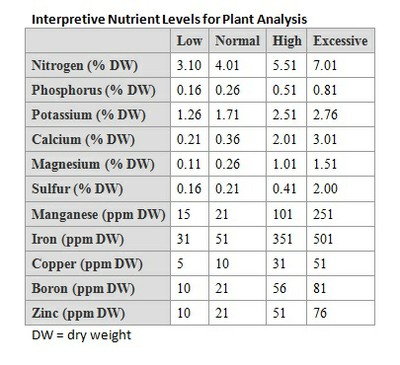Source: Penn State Extension
By Delbert Voight
There are numerous foliar fertilizer products with ideal nutrient levels for numerous micronutrients. Our research indicates tremendous variation in the response to these products.
Yield enhancement is tied to whether the plant is deficient in micronutrients or not. Since we cannot test the soil with accurate assessments of micronutrients, the best way to determine hidden hunger is with a simple $24.00 plant tissue test. A few growers last season enjoyed 90-plus bushels per acre while managing for high yield soybean crops, and many utilized tissue testing to determine foliar fertilizer applications.
The first step is to gain an accurate soil test and maintain optimum levels of phosphorus at 150 ppm and potassium at 300 ppm. The second step is to collect a sample at the R1 to R2 stage (full flower) for plant analysis. The Ag Analytical Lab at Penn State and numerous other labs provide the lab testing for the results. 
Here are the specifics to gather the samples. Once the plant begins to flower (R1), which is occurring at this time in early planted fields, in the following 2 weeks gather the samples and send them off via overnight mail to gain quick results. This will allow for adequate time to determine a nutrient strategy before peak growth at R3 when pods are being filled. Sampling after pods begin to set is not recommended.
| Growth Stage | Plant Part to Sample | Number of Plants to Sample |
| Seedling stage (less than 12 inches) | All of the aboveground portion | 20-30 |
| Prior to or during initial flowering | Two or three fully developed leaves at the top of the plant | 20-30 |






Post a comment
Report Abusive Comment